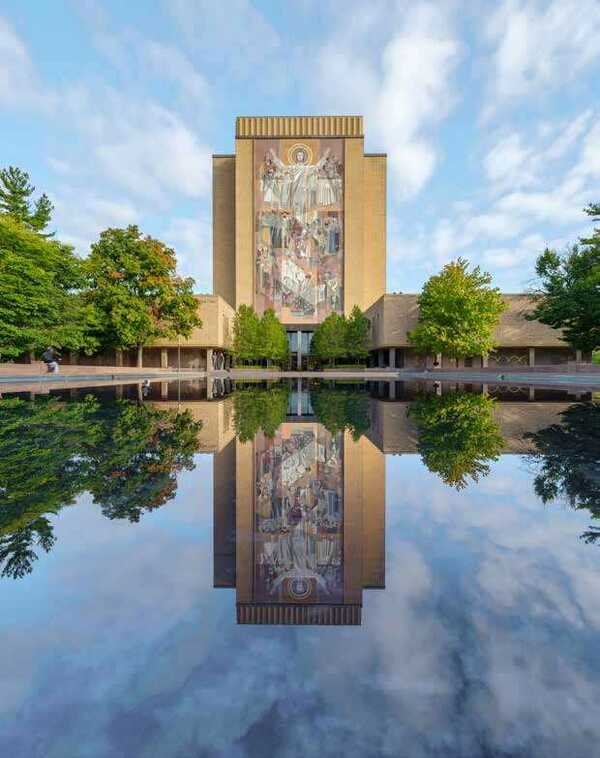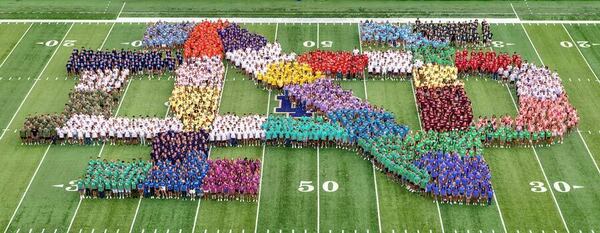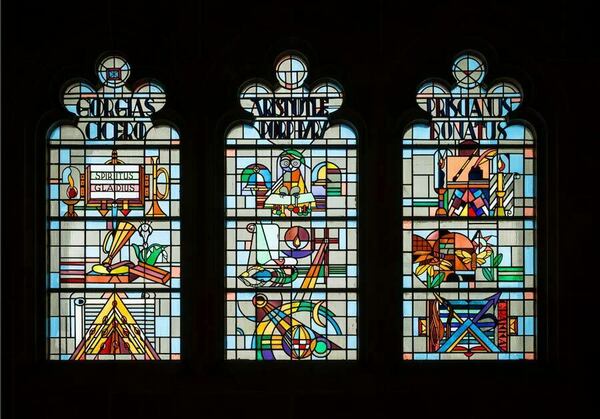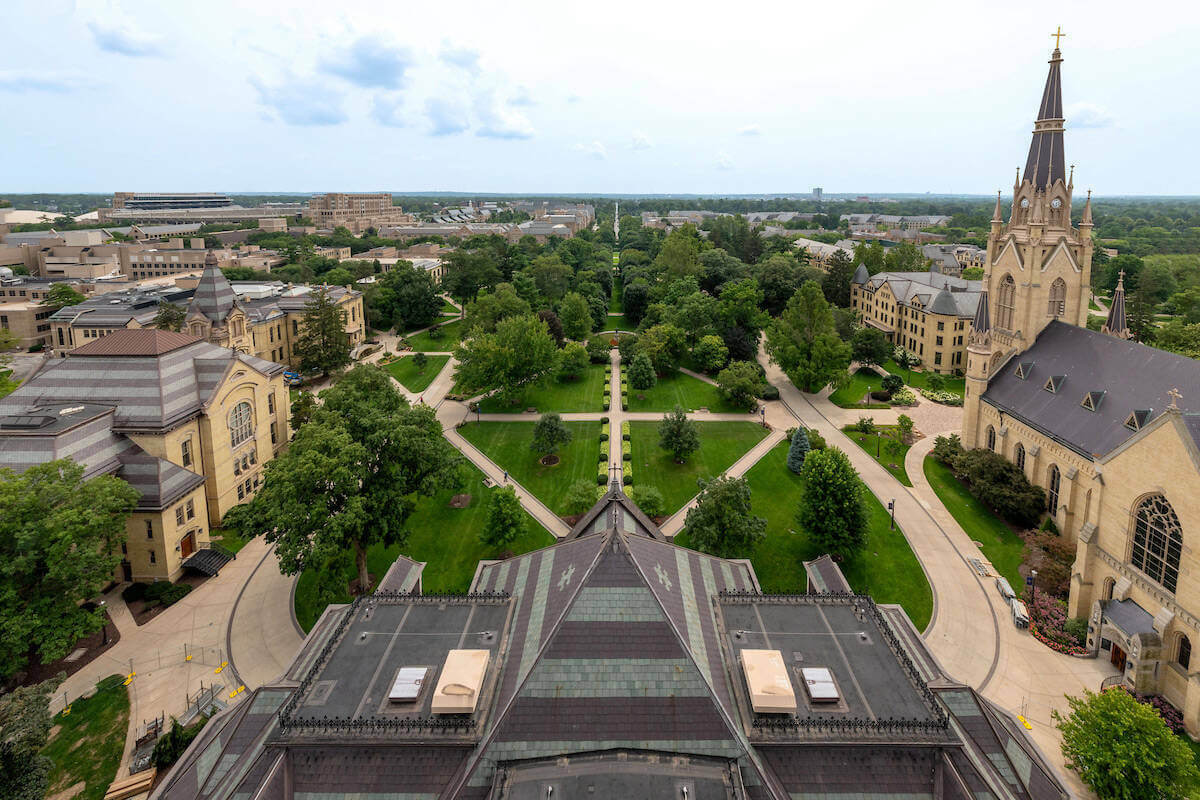- Home ›
- Notre Dame 2033: A Strategic Framework ›
- Part II: Where Notre Dame should go ›
- A. Strengthening foundations
A. Strengthening foundations
Universities are known by their best faculty, students, and programs. Our strategy in the next generation will typically be to strengthen already excellent foundations in an effort to achieve preeminence, not aspire for competence in areas where our track record is modest.
-
For Notre Dame to flourish in the next decade, significant investments must be made in its most important resource: its people. Ensuring that an even more accomplished, even more diverse community of students, staff, and faculty thrives at Notre Dame is the bedrock upon which everything else rests.
-
No group is as important to the reputation of the University, or more central to its accomplishments. Improvements in overall faculty quality and scholarly productivity over the last generation are evident. All rankings systems are imperfect, but a few of Notre Dame’s departments are now ranked among the world’s very best. Over the past two decades every major department has improved its ranking, and more than half of the departments are ranked in the first quartile. 10 Initiatives coming out of this strategic framework must advance the reputations of departments and schools, even as they encourage collaborative projects.

Notre Dame awarded 287 doctoral degrees in 2022, more than some AAU private institutions, although not an especially high number when measured against the number of our faculty. A few measures of scholarly excellence — national fellowships in the humanities, funding levels for individual faculty in science and engineering fields, publications in highly regarded journals in some disciplines — place Notre Dame among the country’s most distinguished universities. Professional school programs — including the JD and the MBA — are ranked in the top 30 and are among the most competitive in the country on some measures, notably law school graduates placed in federal court clerkships.
Other comparisons are less flattering. The University has a number of federally funded, multidisciplinary research centers, but few funded at the highest, most prestigious level. The number of Notre Dame scholars elected to honorary societies such as the National Academies of Sciences and Engineering and the American Academy of Arts and Sciences is low. 11 Visibility in international rankings is lower. 12 A persistent risk remains a willingness to promote faculty without, in the words of another university’s strategic plan, identifying markers of “potential greatness.” 13
The number of faculty at Notre Dame has grown significantly over the last generation, from fewer than 800 faculty members in 2002 to more than 1,300 in 2022. Only a few departments and programs can plausibly claim to be undersized. Authorizing new faculty positions — among the most consequential decisions any university makes — and reallocation of positions upon departure or retirement can now more closely mirror strategic initiatives. The challenge is to identify where the addition of a select group of faculty can catapult an already good program to excellence. These targeted initiatives require greater alignment across colleges, schools, centers, and institutes, since only such collaboration will result in appointments benefiting multiple units and prevent the duplication of expertise. -
Undergraduate education remains the University’s greatest strength. Even as Notre Dame has become a major research university, its beating heart remains the Catholic liberal arts education at its core. This long tradition of excellence must be strengthened and nurtured.
Part of that investment will again be financial. Trade-offs in the area of undergraduate financial aid are complex, and must be calculated in the context of support for doctoral and professional students as well (see below). Still, the national and global context of economic inequality compels Notre Dame and universities like it to develop even wider pathways to socio-economic mobility. To sustain the successes of the last generation, Notre Dame must consider financial aid strategies that will make it even more accessible to applicants from low-income backgrounds. The University will also build on recent efforts to target financial aid funds to avoid a campus divided between students at the highest and lowest points on the family income spectrum.
Relatedly, Notre Dame will become more intentional in creating pathways for lower-socioeconomic students to Notre Dame. Some research universities are experimenting with K–12 education, even creating charter schools near their campuses to build a pipeline of students. Our strategy will be different. Notre Dame’s Alliance for Catholic Education (ACE) includes three ACE Academies and programs that train teachers and principals in more than 200 Catholic schools. The University should begin accompanying students in these schools — and analogous schools such as those in the Jesuit Cristo Rey network — from sixth grade through college graduation. This means making use of weekends and summers to supplement their in-school educational experience, ensuring that these students are better prepared to flourish at a place like Notre Dame.
Part of that investment will be curricular. That Notre Dame developed its research programs later than many of its peers meant that working with undergraduates was of paramount importance, expected of even the most distinguished senior faculty. This emphasis on teaching surprises (and pleases) faculty moving to Notre Dame from other universities. It must be sustained. We attract some of the most talented young people in the world and incur an obligation to challenge them. Every undergraduate should have an opportunity to pursue research as well as meaningful co-curricular experiences and a sufficient number of small-enrollment courses.
Attracting a differently prepared student body — with more first-generation college and low-income students of tremendous ability but often without access to advanced courses in high school — will mean increased investment in tutoring and multidimensional advising. This support is necessary both inside and outside the classroom. While new strategies for tutoring and advising will include all our students, our new Transformational Leaders Program, in particular, is designed to support first-generation and low-income students.
Given the technological changes shaping how students learn, the provost’s office has also charged Notre Dame Learning with assessing current pedagogical practices. We will encourage faculty, including teams of faculty working together on required courses, to compare strategies and assess how we can better ensure that our student learning environments enable success.

Part of that investment will be in residential and community life. Nothing more distinguishes Notre Dame than the communities formed within residence halls. Because Notre Dame’s Catholic and Holy Cross vision of education emphasizes the formation and development of the whole person, strengthening the communities formed within residence halls is crucial and led to the University requiring students to live on campus for a minimum of three years. Deepening that commitment — when off-campus alternatives possess considerable attraction — requires continuing renovation of older residence halls and construction of new residence halls when renovation is impractical.
Forging connections between student life and the academic core is also essential. These connections range from small items — ensuring space for faculty apartments in renovated or newly constructed residence halls — to larger projects such as reconceiving the required Moreau course for first-year students as an even deeper collaboration between the Division of Student Affairs, the Office of Undergraduate Education, and the colleges and schools.
The mental health challenges faced by contemporary students also impinge on community life. Notre Dame, like its peers, is working to increase staffing in its counseling center and create an array of opportunities for mental health support, education, prevention, and early intervention. (The Division of Student Affairs is central to our research efforts in mental health, as described below.) At the same time, we can also afford to take a broader view, creating links between spiritual development and mental health and working to cultivate a culture of reflection and discernment among students.
-
Investing in graduate students, professional degree students, and postdoctoral fellows.
Graduate education for doctoral students occurs primarily at the level of the department or school, not the president’s or provost’s office, but the Graduate School is an important advocate for and supporter of all students.
One fundamental challenge is not complex: graduate students are attracted to work with successful faculty, but Ph.D. stipends matter too. The challenge is less to grow the size of our doctoral programs — a goal a generation ago — and more to ensure that Notre Dame competes for the strongest students and provides the best environment for them to flourish. These efforts to enhance stipend levels for doctoral students will require coordination between the Graduate School and the schools and colleges. On average, we now typically pay just over $30,000 a year to admitted doctoral students but some of our peers are offering $40,000 per year and beyond. 14 We need to be competitive on stipends to avoid talented students choosing other programs for financial reasons alone.
The financial challenges presented by professional degree programs — law, business, architecture, divinity, global affairs, creative writing, fine arts and design — are slightly different. For most of its history, like its peers, Notre Dame provided little financial aid for professional students. Especially in law and business, the assumption was that students would quickly repay educational debts incurred with salaries from professional positions. This assumption is no longer always operative. More financial aid is now needed to ensure the diverse classes that create the strongest educational environment and to allow students in professional degree programs to choose between more and less remunerative career paths.
Postdoctoral fellows are a relatively new addition to the Notre Dame ecosystem. These scholars come to Notre Dame after completing a Ph.D. elsewhere, typically for two to three years of training that enables them to move onto high-level positions in academia, government, and industry. Especially in Science and Engineering, they often constitute the lifeblood of a vibrant research program. The number of postdoctoral fellows at Notre Dame, however, remains low when compared to peer institutions. 15 We need to increase that number, in part by endowing such fellowships. Doing so will strengthen multiple programs. 16
-
Attracting, developing, and retaining talented and diverse staff across all areas is critical for Notre Dame to achieve its aspirations. We know that investing in career development opportunities for staff is vital. Superb staff play an indispensable role in advancing our academic core, creating enriching experiences to help form our students, and operating a complex research university at the highest level.
Notre Dame demonstrated its commitment to staff through the financial crisis of 2008 (no layoffs, no reduction in retirement benefits), through the pandemic (no layoffs, no reduction in retirement benefits), and with some of the highest post-pandemic wage increases in the nation. These commitments were wise.
As the University grows, especially in the area of funded research, so too must the number of staff to support faculty and students. Growth in the number of staff, like growth in the number of faculty, must also be monitored and assessed. The number of staff has increased from 3,006 in 2002 to 4,119 in 2022, with the largest increases occurring among academic staff. An opportunity in the decade ahead will be to deploy talented staff so that the rate of staff growth moderates even as we expand our capacity for teaching and research.
-
Investments in our people will not be effective unless we simultaneously build a more diverse and inclusive community. The dignity of all human beings is the core theme of Catholic social thought and as such the cornerstone of the University’s diversity and inclusion efforts. Becoming more diverse and strengthening the University’s Catholic mission is a single project, not two parallel tasks.
Part of this effort is cultural and intellectual. Because the documents of the Second Vatican Council urge Catholics to acknowledge and welcome what is “true and holy” in all faith traditions, Notre Dame should deepen its commitment to engagement with people coming from diverse religious backgrounds. 17
Similarly, the University will contribute to the scholarly assessment and analysis of diversity and inclusion inside and outside the United States, notably through existing campus organizations such as the Department of Africana Studies, the Institute for Latino Studies, the Initiative on Race and Resilience, and the Klau Institute for Civil and Human Rights, and broad-ranging efforts in the arts. Even as University community members assess the impact of race and racism outside Notre Dame, they should also be alert to the ways in which racism within the University has weakened its witness and capacity to lead within Church and nation. 18 The recent Board of Trustees report on diversity and inclusion usefully contrasts “welcoming ‘others’ into ‘our’ home as guests and truly sharing that home as equals.” 19
Part of this effort is representational. The undergraduate student population at Notre Dame is now more diverse than at any point in its history, with 33 percent of students in the Class of 2022 identifying themselves as members of underrepresented groups. The graduate student population is diverse as well, certainly in terms of international students (see below), although more needs to be done to recruit underrepresented students from within the United States. This summer’s Supreme Court decisions will complicate, but not deter, our efforts to enroll a student body that reflects the diversity of experiences and gifts of the human family.
Efforts to diversify the faculty and senior staff have proceeded in fits and starts, with modest successes — notably among Latino faculty — but also continued and significant challenges. Undergraduate students from underrepresented groups routinely attend classes for four years at Notre Dame without enrolling in a course taught by someone who looks like them. Graduate and professional students remark on this experience too. These issues demand not only urgency but long-term commitment. Aspirations for faculty and staff hiring and retention need to be articulated and programs to ensure an inclusive campus expanded. We must commit, again in the phrasing of the Trustees’ report, “to the long game if we are truly to become the university we aspire to be. 20
-
-
A second dimension of strengthening foundations is identifying particular intellectual areas where the University already possesses excellence and can imagine preeminence.
-
The first of these areas is in the humanities and the arts.

In some excellent universities, humanities faculties feel besieged for a mixture of political and financial reasons. By contrast, these areas will remain central to Notre Dame because of their importance for understanding truth, beauty, and the human condition, and their centrality to Catholic intellectual life. Exposing students to theological and ethical questions, training students in foreign languages and cultures, exploring the moral complexity of the past, and encouraging encounters with great art and literature are fundamental, not optional, for a Catholic liberal arts education. More pragmatically, some of the University’s strongest departments, programs, and library collections are in these areas, and investments with one eye toward collaboration across the University can strengthen the whole.
The arts at Notre Dame have never been stronger. The capital investments are again remarkable: a new performing arts center (2004), a new architecture building (2018), a new building for Music (2018), a new museum (2023), and a proposed new facility linking Art, Art History, and Design with the new museum so as to deepen the visual education of Notre Dame students. One relatively new program, Sacred Music, has quickly become one of the nation’s best. The challenge in the next generation is to build excellent programs in the arts that draw on our collective resources, something more compelling than unrelated programs housed in neighboring buildings. Part of this effort will be drawing connections between the arts and other disciplines. Part will be even greater engagement with the local community.
-
A second thematic area where Notre Dame possesses great strength and even greater opportunity is the study of democracy. Crises in democratic governance are one of the disturbing aspects of our age. Partisan information flows directed by social media, doubts about election outcomes, and deep polarization mark political life in the United States as well as other countries. A proposed Notre Dame Democracy Initiative will draw, first, on considerable scholarly expertise. The Kellogg Institute for International Studies has emphasized the study of democracy in Latin America since its founding 40 years ago, and scholars in other areas of the University, notably the Department of Political Science (including the Rooney Center for the Study of American Democracy, the Notre Dame International Security Center, and the Center for Citizenship and Constitutional Government), the Law School, the Nanovic Institute for European Studies, and the Liu Institute for Asia and Asian Studies now study politics and governance in a variety of ways. Connecting these efforts into a more coherent set of programs is crucial. So, too, is inspiring all students to fulfill their responsibilities as citizens, and more students to aspire to careers in public service.
Another dimension of the University’s work on democracy will benefit from its status as one of the country’s most trusted institutions of higher education. 21 Both in an enhanced Washington, DC office — which could provide a focal point for a number of the University’s more policy-oriented efforts — and on campus, Notre Dame should more consciously strive to become a forum for bipartisan conversations about a shared democratic future.
-
A third thematic area is ethics. Notre Dame’s overall reputation in the study of ethics is stronger than its reality. The opportunity lies in that reputation. Cornerstones exist, including scholars doing foundational ethics in theology and philosophy, and strengths in applied areas such as business and technology ethics and the ethics of development.
The challenge going forward is to determine how a shared, reimagined effort in ethics might allow Notre Dame to lead in this field. Success would be more top-flight scholars with both a professional and public voice on important ethical questions; opportunities for students to confront contemporary challenges such as artificial intelligence, bioethics, and ethical investing; and a commitment to hosting significant public events on these topics. This ethics effort would shape undergraduate and graduate education, develop industry partnerships (such as the University’s current collaboration with IBM), and inform a broader public concerned that scientific and technological advances risk outrunning our capacity to mount considered responses.
-

Footnotes
10. ^ Theology is ranked No. 1 in the latest Quacquarelli Symonds’ (QS) rankings; Philosophy is ranked No. 12. On other rankings see U.S. News and World Report graduate school rankings.
11. ^ Notre Dame has one current faculty member in the National Academy of Sciences while the average of the AAU privates is 28. Notre Dame has two current faculty members in the National Academy of Engineering while the AAU private median is 11. Notre Dame has seven current faculty members (and 13 emeritus faculty members) in the American Academy of Arts and Sciences while the AAU private median for active faculty members is 28.
12. ^ Notre Dame ranks 220 in the Times Higher Education World University Rankings, and the median rank for other AAU private institutions is 42.5.
13. ^ The reference is to a 1980 strategic plan at Duke University. See William C. Kirby, Empires of Ideas: Creating the Modern University from Germany to America to China (Cambridge, MA, 2022), 211.
14. ^ Doctoral student stipends at Princeton, Northwestern, Duke, and Chicago all begin in the high $30,000 range and can reach well over $40,000 per year.
15. ^ The number of postdoctoral fellows has been steadily increasing at AAU institutions but has remained comparatively stagnant at Notre Dame (1995–2020). National Center for Science and Engineering Statistics, Graduate Students and Postdoctorates in Science and Engineering Survey.
16. ^ Sam Zhang, K. Hunter Wapman, Daniel B. Larremore, and Aaron Clauset, “Labor advantages drive the greater productivity of faculty at elite universities,” Science Advances 8 (2022), no. 46.
17. ^ Nostra Aetate (1965) § 2
18. ^ See, for example, the testimonies in Black Domers: African-American Students at Notre Dame in Their Own Words, Don Wycliff and Andrew Krashna, eds. (Notre Dame, 2017).
19. ^ Notre Dame Board of Trustees’ Task Force Report on Diversity, Equity, and Inclusion (2021), p.4.
20. ^ Ibid., 7.
21. ^ Morning Consult, 2022 Most Trusted Universities, 2022. Accessed June 22, 2023.
A. Strengthening foundations